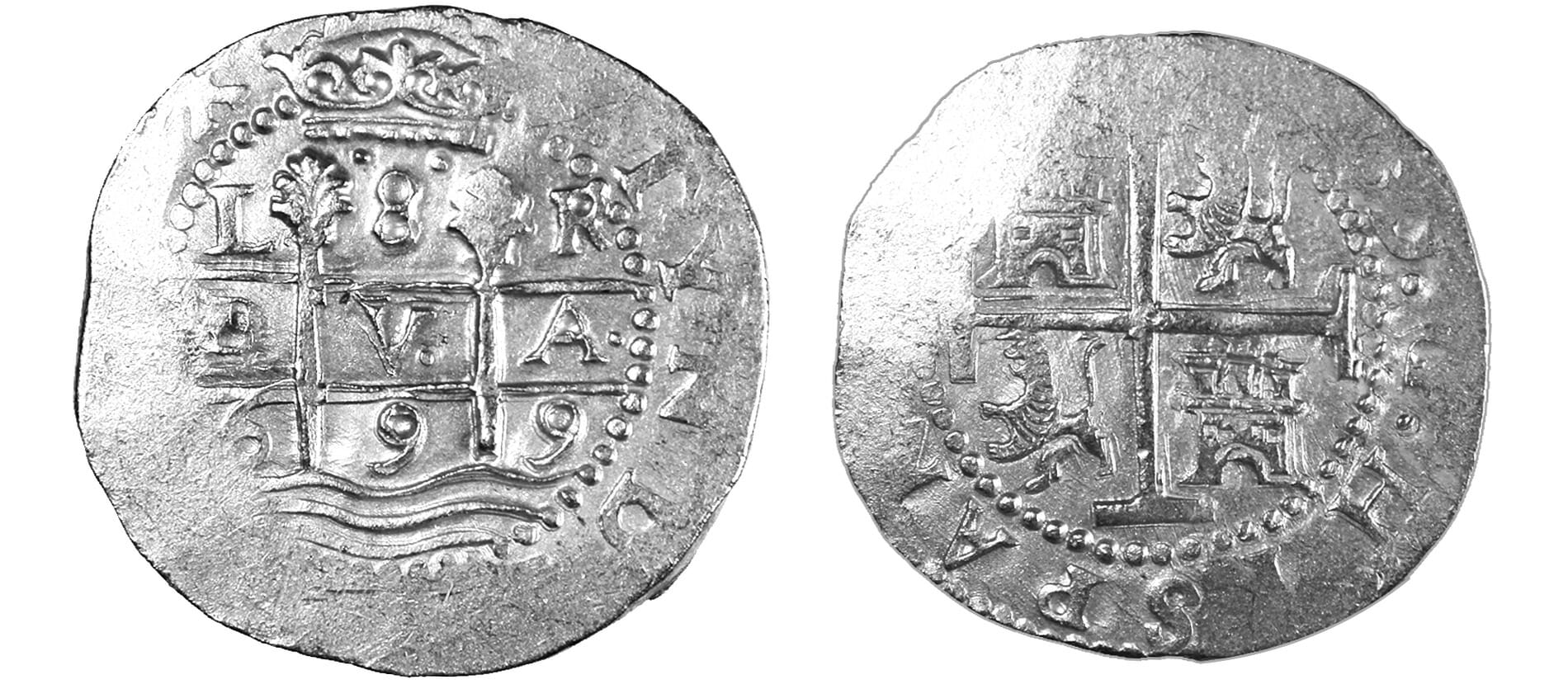Why do we display so many gold coins from the colonial Lima mint? Because they are so beautiful to behold! The specimens are nearly round, the strikes are centered and deep, and the color … what we call “butter gold”… is what we see in our subjects in most cases. The COVER COIN this time is another choice example of the numismatic workmanship expected from Lima.
The note from Sedwick Coins, LLC, which accompanied Augi’s photos reads: “A highlight in Sedwick’s upcoming Treasure and World Coin Auction #10, this 1715-Fleet rarity is fully Mint State and well centered, attributable by its date to Charles II and therefore among the first gold coins from this mint.”
The bold cross is deeply struck and centered on the obverse (this page) of this gem. A little flatness in the planchet may be seen to the upper left, but it is like the little scar on a swordsman’s face, giving the piece a touch of rugged handsomeness. Its quartered lions and castles are, likewise, nice and deep, and some of the obverse legend can be read: C • II • D • G • HISPANIARVM…
The legend continues on the reverse (p. 1): …ET • YNDIARVM • REX. Again there is some flattening on this side, leaving us to mentally fill in the missing letters in the legend. BUT, the center detail is quite visible due to its strike, and the crowned pillars and the horizontal lines across them leave the required spaces for (top): L || 8 || R, standing for Lima / 8 Escudos / Rojas. The second line in the “crosshatch” pattern contains the letters P. || V. || A., an abbreviation of the motto: Plvs VltrA. And the date (1699) may be seen on top of the wave in the bottom array: 6 || 9 || 9. All in all, this is a choice piece for the time, and we’ll have to wait and see what it brings at the October auction (#10)…see page-11.
—EJR—

Responses